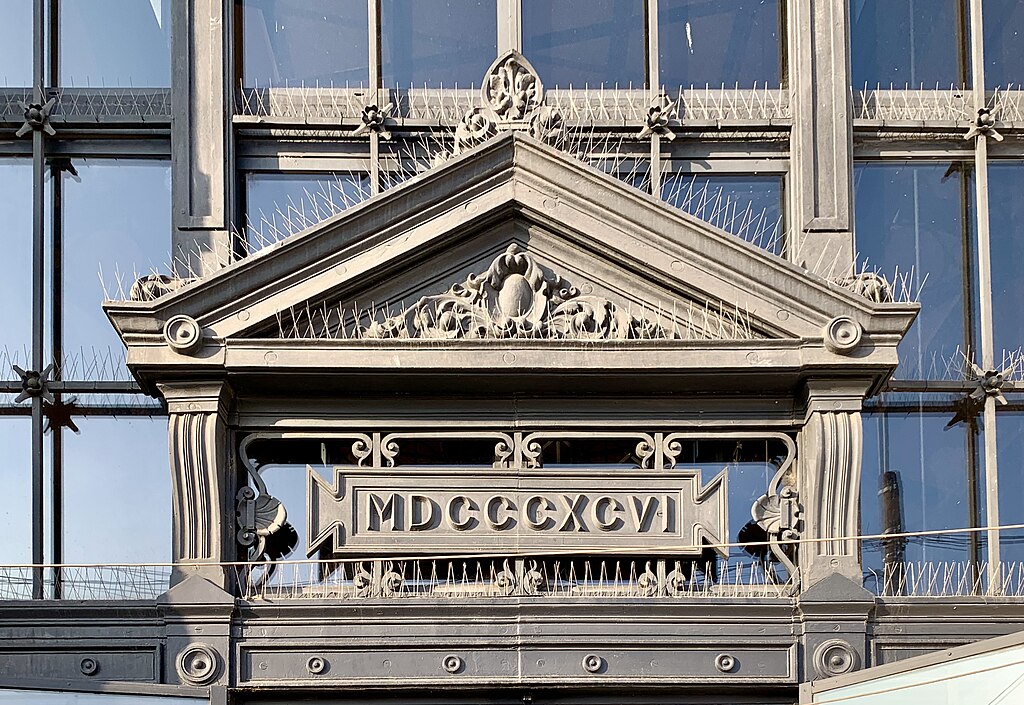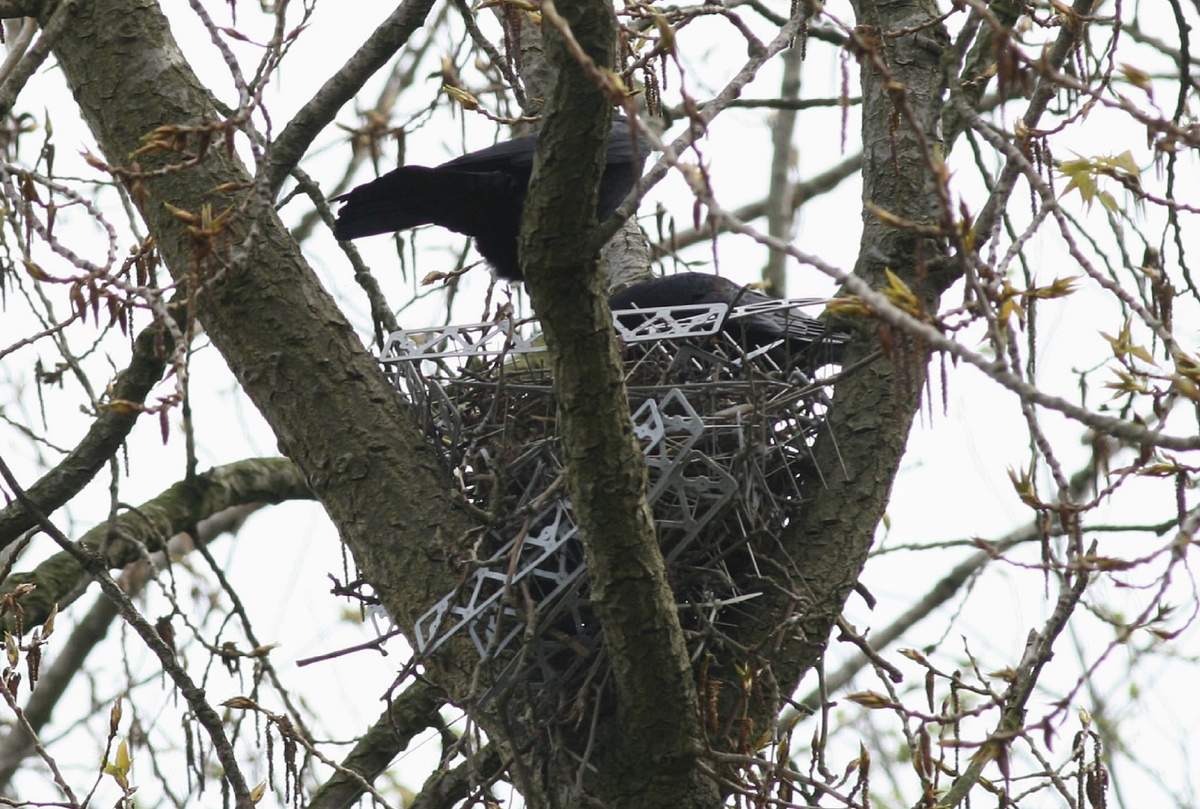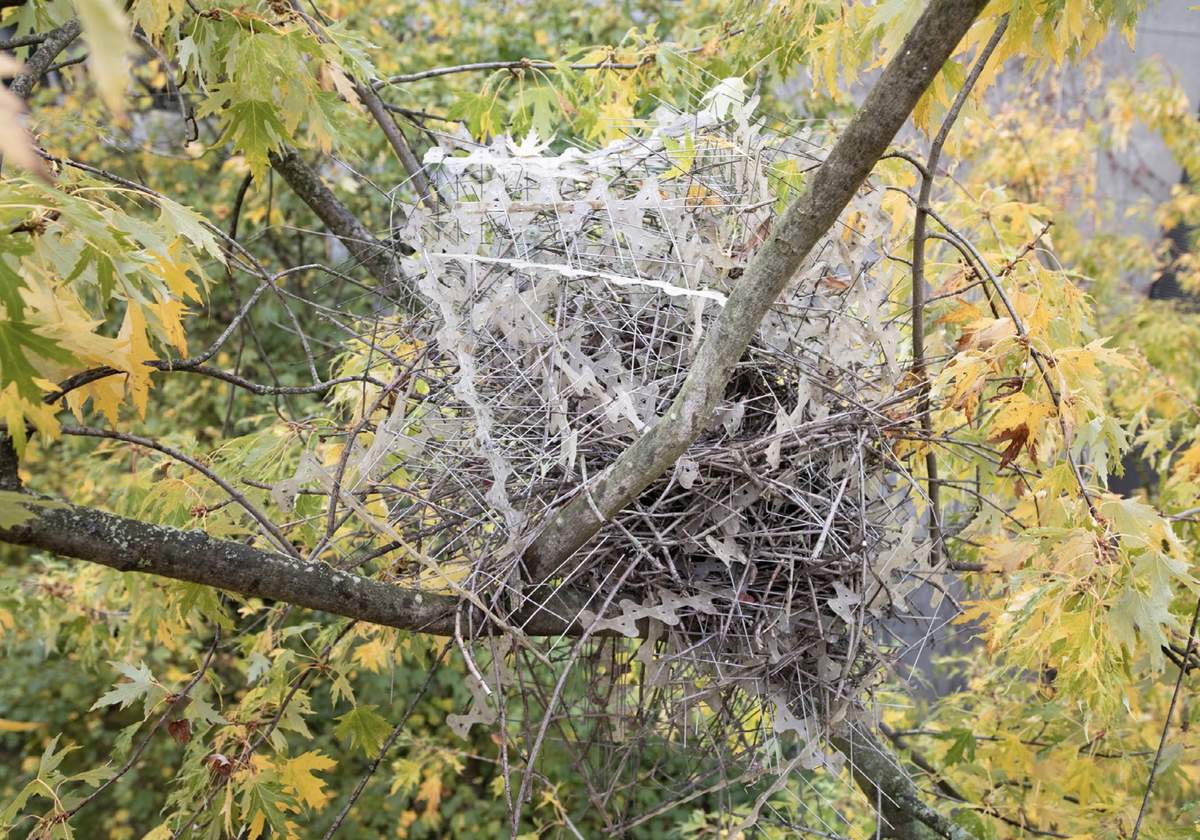Scientists in Europe have discovered that magpies and crows are using an unusual material to build their nests – spikes designed to keep birds away from buildings. The birds appear to be removing the spikes from buildings and adding them to their own nests.
Auke-Florian Hiemstra is a Dutch scientist who studies how wild animals use materials made by humans. He has seen nests that include some pretty unusual materials – things like plastic flowers, sunglasses, and even windshield wipers. “Almost anything can become part of a bird nest,” he says.
But he was surprised when someone at a hospital in Antwerp, Belgium sent him a picture of a magpie nest. The top of the nest had thin metal spikes poking out all over. The metal spikes were “anti-bird spikes”. They come in strips and are usually placed on buildings to prevent birds from landing. But this time, the birds had used the strips of spikes to make a nest.

(Source: Neoclassicism Enthusiast [CC BY-SA 4.0], via Wikimedia Commons.)
In time, the researchers learned about several other nests in Europe that also used anti-bird spikes. Some were magpie nests; others were made by crows. “These are the craziest bird nests I’ve ever seen,” says Mr. Hiemstra.
Magpies and crows are known for being clever. The two kinds of birds are related, and are famous for being able to solve challenging problems.
But the birds didn’t use the spikes in exactly the same ways. The crows used the spikes on the inside of their nests to help make the nests stronger.

(Source: Garry Bakker [CC BY 4.0], Het Natuurhistorisch.)
Magpies have to worry about other birds, including crows, stealing their eggs. Normally, they use thorny branches to build a spiky rounded cover over their nests. But in this case, they appeared to use the spikes like humans do – putting them on top of their nests to keep other birds from landing. Mr. Hiemstra says the magpie nest found in Antwerp had about 1,500 spikes in it.
The researchers didn’t actually spot either kind of bird taking spikes off of buildings. But other birds have been seen doing this. And the scientists noticed that, near the nest, the hospital in Antwerp was missing strips of anti-bird spikes.

(Source: Auke-Florian Hiemstra, [CC BY 4.0], Het Natuurhistorisch.)
It’s common for birds to use man-made materials in their nests. One recent study reported that nests with man-made materials have been found all over the world, except in Antarctica.
Scientists aren’t sure if birds are using artificial materials because they’re better, or simply because they’re easy to find. Nests have been found with all kinds of man-made materials, including fishing line, candy wrappers, plastic bags, and cigarette butts.
Man-made materials can both help and hurt the birds. For example, chemicals from cigarette butts can keep insect pests away, but they can also poison the birds. Bits of string may help birds build nests, but baby birds can get tangled in them.
It’s not clear if spikes in nests cause any problems for the birds. But it’s probably more common than we know. Mr. Hiemstra thinks there are probably more nests out there that were built with anti-bird spikes. They just haven’t been found yet.
Did You Know…?
Some scientists think it’s possible that other crows and magpies might start imitating these birds, and using spikes in their nests, too. And chicks that were raised in a nest built with spikes might think it’s perfectly normal.
